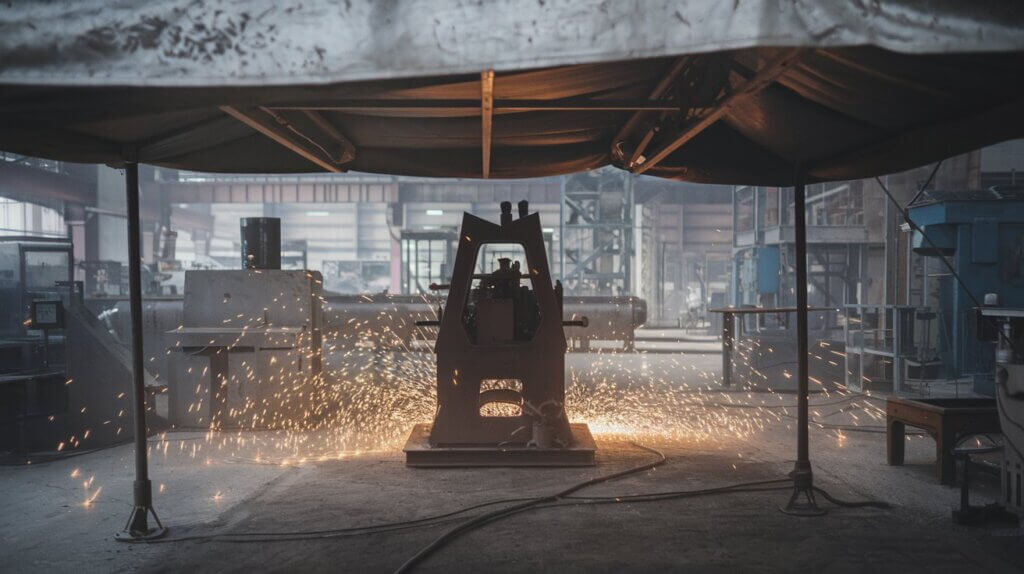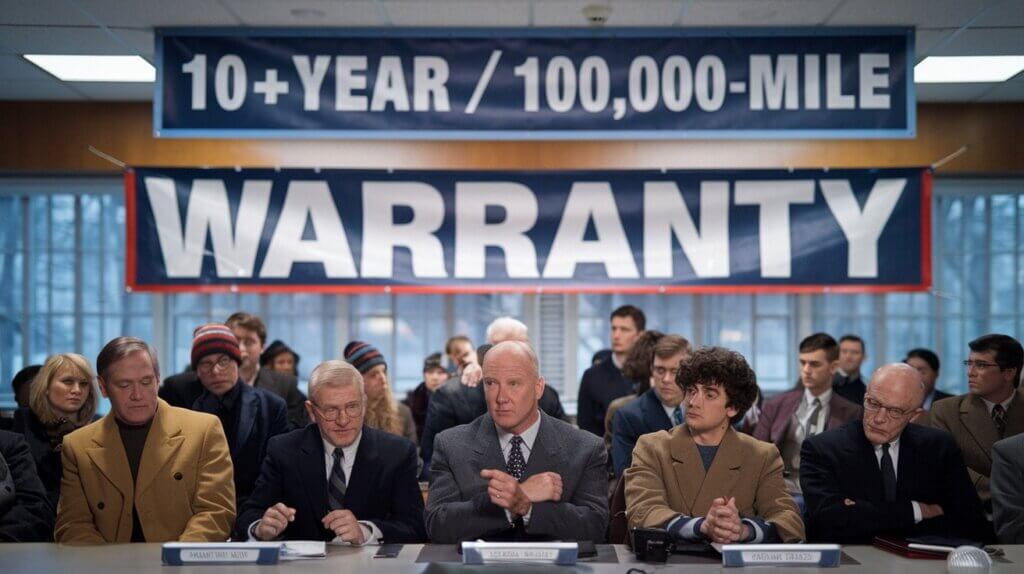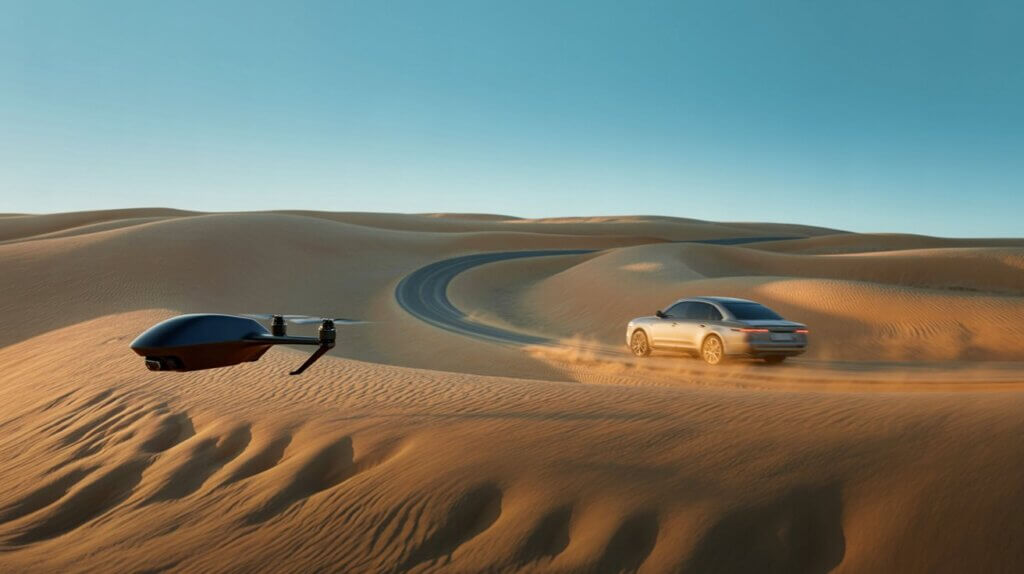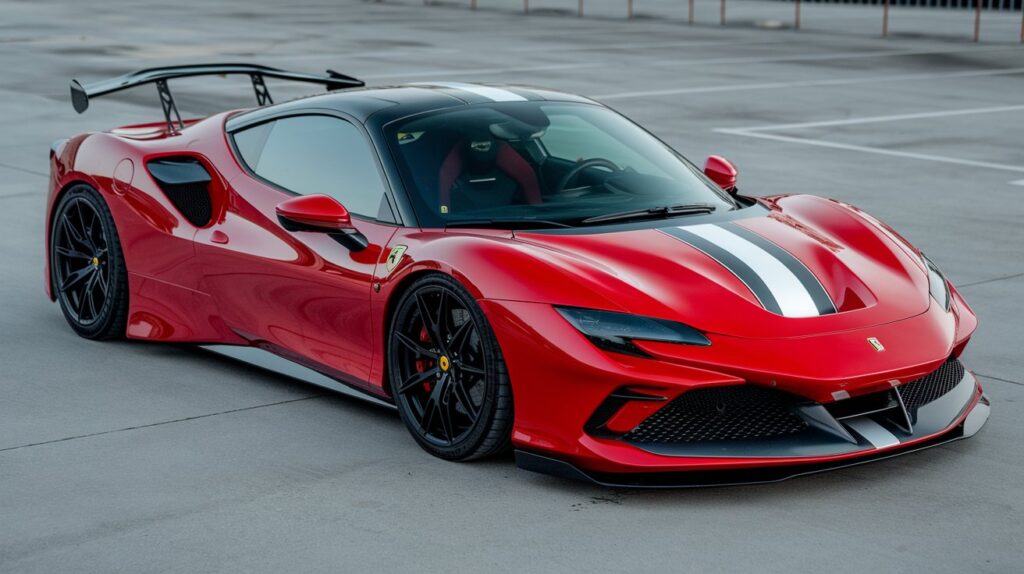Chapter 1: From Blueprints to Dreams – Hyundai’s Humble Origins
In the ashes of the Korean War, where hope was scarce and ambition even scarcer, a young man named Chung Ju-yung stood at the crossroads of devastation and determination. Born to a poor farming family in a remote village in 1915, Chung had tried — and failed — many times to break free from his humble beginnings. But what set him apart wasn’t luck. It was relentlessness.

In 1947, against all odds and in the shadow of colonial rule and conflict, Chung founded Hyundai Engineering & Construction — the company that would one day bear the dreams of an entire nation.
Table of Contents
But back then, it was just a name and a will to build. Literally.
Hyundai’s early years weren’t about cars. They were about concrete, cranes, and contracts. The firm rose to prominence in the 1960s, leading some of South Korea’s largest infrastructure projects: bridges, highways, and ports that connected a fractured country. Each structure wasn’t just a feat of engineering — it was a declaration: We’re rebuilding, and we’re doing it ourselves.
As the South Korean government under President Park Chung-hee pushed rapid industrialization, Chung Ju-yung’s Hyundai became a crucial pillar in the nation’s economic miracle — the “Miracle on the Han River.” But for Chung, engineering buildings wasn’t enough. He didn’t just want to construct Korea’s future — he wanted to drive it forward.
By the late 1960s, his eyes turned toward mobility. While Japan, Germany, and the U.S. raced ahead in the global automotive market, Korea had no presence, no history, and no manufacturing base. Many called the idea foolish. Some even laughed. How could a nation still recovering from war hope to produce cars on par with the West?
But Chung Ju-yung wasn’t asking if it could be done — he was asking when.
In 1967, Hyundai Motor Company was born.
It began not with cars, but with a vision: to create a car built by Koreans, for Koreans — something that would symbolize national pride, economic self-reliance, and a new era of industrial ambition.
The dream was still on paper. But in Korea, paper is where revolutions often begin.
That dream would take shape in the next chapter — in the form of steel, wheels, and something called the Hyundai Pony.
Chapter 2: The Birth of an Automaker – Enter the Hyundai Pony
When Hyundai Motor Company was founded in 1967, South Korea didn’t have the tooling, expertise, or even the public trust to produce its own vehicles. The nation’s streets were dominated by imported Japanese cars. To many, the thought of a South Korean automobile was more of a national fantasy than a market reality.

But for Chung Ju-yung, it wasn’t just about building a car — it was about building the first Korean car.
To make that happen, Hyundai had to start by learning from the best. The company entered a technical collaboration with Ford Motor Company, assembling models like the Ford Cortina under license. It was Hyundai’s automotive kindergarten — a way to absorb the principles of design, manufacturing, and distribution.
Yet Chung didn’t want to be a student forever. He wanted to graduate — and create something original.
That moment arrived with the birth of the Hyundai Pony.
The Pony Project
Launched in 1975, the Hyundai Pony became South Korea’s first domestically produced, mass-market car. It wasn’t just a vehicle — it was a statement. The compact, rear-wheel-drive sedan was simple, reliable, and affordable — just what a rapidly developing Korean middle class needed.
But to create the Pony, Hyundai had to look abroad for talent while keeping the soul of the car Korean.
They enlisted the legendary Italian designer Giorgetto Giugiaro, the man behind icons like the DeLorean DMC-12 and the Volkswagen Golf. The styling was crisp, modern, and unmistakably European — yet it felt accessible.
Under the hood, they partnered with Mitsubishi to supply the engines and drivetrains. The result? A Frankenstein of global excellence, stitched together with Korean determination.
Hyundai didn’t hide its international support. Instead, it wore those collaborations with pride. The goal was never isolation — it was integration. Learn fast, adapt faster, and then lead.
A Nation’s Symbol
When the Pony rolled off the production line, it wasn’t just a product. It was a symbol of national rebirth. Hyundai sold over 50,000 units in the first year — a remarkable figure in a market that had never seen a homegrown car before.
For many Koreans, buying a Pony wasn’t just about transportation. It was about patriotism. Owning one meant backing Korean innovation, trusting Korean labor, and moving toward a Korean future.
And yet, Hyundai had bigger dreams.
By 1976, Pony exports began — first to South America, then to parts of Europe, including the UK. It was modest at first, but it proved Hyundai wasn’t content staying in the shadow of Japan. It wanted a seat at the global table.
But with new markets came new challenges — and soon, the company would face its biggest test yet: the demanding, competitive, and unforgiving roads of America.
Chapter 3: Struggling Abroad – Hyundai’s Rocky Road in America
In 1986, Hyundai made its boldest move yet — entering the world’s most competitive car market: the United States. The vehicle chosen to blaze the trail? The Hyundai Excel, a front-wheel-drive subcompact priced at just $4,995. It was the cheapest new car in America.
The response was immediate and overwhelming. In its first year, Hyundai sold over 168,000 units of the Excel — a U.S. record for a new entrant. To many American buyers, it was a no-brainer: stylish, fuel-efficient, and unbelievably affordable.
But as fast as success arrived, so did the consequences of rapid scaling.
Cracks Beneath the Surface
Beneath the Excel’s flashy entry price was a troubling truth: quality control had not kept pace with demand.
As early models aged, complaints began pouring in — premature rust, electrical issues, transmission failures. Word spread. Mechanics were wary. Resale values plummeted. What began as a budget miracle quickly became an automotive cautionary tale.
Hyundai’s brand, barely established in the U.S., was on the verge of collapse.
Customers who had once lined up to buy the Excel were now writing angry letters. Newspapers ran headlines questioning the reliability of Korean cars. Dealerships felt the heat as confidence eroded.
And yet, in the face of growing reputational damage, Hyundai made a choice that would change its destiny: to confront the crisis head-on.
Corporate Reckoning
By the early 1990s, Hyundai’s leadership realized it wasn’t enough to just be affordable — it had to be dependable. The company launched internal reviews, overhauled its quality assurance processes, and expanded its R&D efforts.
Chung Ju-yung’s son, Chung Mong-koo, took a more prominent role during this critical time. Under his stewardship, Hyundai began laying the groundwork for reinvention. No longer would Hyundai be seen as the “cheap” option — it aimed to be smart, trustworthy, and innovative.
It was a painful lesson, but a vital one. Hyundai had stumbled on the world stage, but it refused to exit.
Instead, it doubled down — on engineering, on warranty, and on pride.
The transformation would take years. But it would come.
And when it did, Hyundai would return not just with a better car — but with a whole new identity.
The Hyundai Renaissance was about to begin.
Chapter 4: Reinvention – Quality, Design, and the Hyundai Renaissance
By the late 1990s, Hyundai’s brand in America was bruised. Sales had declined. Reputation was shaky. The Excel’s early success had faded into memory, replaced by caution and consumer distrust.
But behind the scenes, Hyundai had been rebuilding — quietly, methodically, and relentlessly.
And then, with one bold move, it shouted to the world: We’re not who we used to be.
The 10-year/100,000-mile warranty, introduced in the U.S. in 1998, was more than a marketing gimmick — it was a corporate promise. No other automaker in America offered anything close. Hyundai wasn’t just asking for a second chance; it was putting its money — and engineering — on the line.

Engineering a Comeback
Internally, Hyundai had transformed its development pipeline. New facilities like the Namyang R&D Center and global proving grounds helped Hyundai test durability under the most extreme conditions.
The company shifted from imitation to innovation — investing heavily in engine development, safety, and quality control. Every component was scrutinized. Every defect studied.
Hyundai also began recruiting global talent — especially in design.
In the early 2000s, Hyundai hired European and German designers, including Peter Schreyer, the former Audi design chief responsible for the TT and VW New Beetle. Schreyer brought a design-led philosophy to the brand, redefining Hyundai’s visual identity with bold lines, refined proportions, and the now-iconic cascading grille.
Models like the Sonata, Elantra, and Santa Fe began turning heads not just for their value, but for their style and substance.
Suddenly, critics weren’t scoffing — they were comparing Hyundai favorably to Honda, Toyota, and even VW.
The Birth of Genesis
By 2015, Hyundai took its boldest step yet — launching Genesis as a standalone luxury brand.
It wasn’t the company’s first flirtation with premium vehicles. Earlier models like the Hyundai Equus hinted at luxury ambitions. But Genesis was different. It was Hyundai’s answer to Lexus, BMW, and Mercedes-Benz.
With meticulously engineered sedans like the Genesis G80 and G90, Hyundai declared that it wasn’t just competing on price anymore — it was competing on prestige.
Journalists took note. Awards followed. JD Power and Consumer Reports began ranking Hyundai and Genesis among the top in reliability and satisfaction.
It was a full-circle moment.
The automaker once mocked for cut-rate cars had now become a symbol of smart design, engineering rigor, and unmatched value.
Cultural Confidence
As Hyundai reinvented itself, South Korea was rising globally in culture, tech, and influence. K-pop, Korean cinema, and brands like Samsung and LG dominated global attention.
Hyundai’s transformation mirrored this national ascent. It was no longer the underdog — it was a global contender.
And yet, even at the height of its design and quality renaissance, Hyundai knew the auto world was shifting again — this time toward electrification and intelligent mobility.
And once more, it refused to be left behind.
Chapter 5: More Than a Badge – Hyundai’s Global Identity
By the 2010s, Hyundai was no longer simply a Korean car brand. It had become a global force, with footprints on nearly every continent and vehicles in over 190 countries.
The badge that once symbolized economic hope for a rebuilding nation now stood for something broader: adaptability, innovation, and global relevance.
But how does a company from South Korea — a nation smaller than the U.S. state of California — manage to feel local in so many corners of the world?
The answer lies in how Hyundai built more than just cars. It built culture, infrastructure, and trust.
Built Around the World, For the World
Hyundai knew early that exporting cars wasn’t enough — building them near the customer was key.
- In Alabama, the Hyundai Motor Manufacturing plant, opened in 2005, brought over 3,000 jobs to the U.S. and symbolized Hyundai’s long-term commitment to American consumers.
- In Chennai, India, Hyundai established its second-largest manufacturing hub, supporting not just domestic demand, but exports to over 100 countries.
- In Europe, Hyundai operates out of Nošovice, Czech Republic, designing and manufacturing vehicles specifically tailored to European tastes — tighter steering, premium materials, diesel variants.
Each factory wasn’t just a plant — it was a message: We’re here to stay. We build with you in mind.
Sensuous Sportiness: A Design Philosophy
As Hyundai scaled, it also refined its identity — not just mechanically, but emotionally.
Enter the design language of “Sensuous Sportiness.” More than a slogan, it became the DNA across models like the Hyundai Sonata, Tucson, and Elantra — bold surfaces, dynamic contours, and elegant aggression.
Peter Schreyer, now the head of design for the Hyundai Motor Group, described it as “creating emotional value and a sense of belonging.” And it worked. The new Hyundai models looked nothing like their predecessors — and nothing like their competitors either.
This visual maturity helped shake off any remaining image of Hyundai as “just a value brand.” Customers began to aspire to Hyundai, not settle for it.
The Power of Story: Culture & Motorsport
To connect deeper with people, Hyundai didn’t rely solely on advertising. It entered the realm of storytelling and shared experience.
- In motorsport, Hyundai’s entry into the World Rally Championship (WRC) in 2014 shocked skeptics — and then silenced them with back-to-back manufacturer titles in 2019 and 2020.
- Through global campaigns like “Progress for Humanity,” Hyundai positioned itself not just as a carmaker but as a mobility partner in the age of environmental and social awareness.
- In film and entertainment, Hyundai vehicles began appearing in K-dramas, global blockbusters, and pop culture narratives — not as product placements, but as extensions of lifestyle.
A Brand Reborn
By the time the 2020s arrived, Hyundai was no longer being compared to Toyota or Honda in terms of catching up. It was being measured against Tesla, BMW, and Mercedes — for innovation, sustainability, and luxury.
The badge — an italicized “H,” once mocked for being forgettable — had become a symbol of forward motion, confidence, and global versatility.
And yet, even this phase wasn’t Hyundai’s final form.
The combustion engine era was fading. A new age was dawning — one that demanded not just efficiency, but zero emissions, zero boundaries, and zero compromise.
Hyundai was ready — not just to follow, but to lead.
Chapter 6: Beyond Combustion – Hyundai and the EV Future
The age of combustion was never meant to last forever — and Hyundai knew it. While many legacy automakers clung to gasoline pipelines and incremental change, Hyundai made a strategic pivot that would redefine its legacy: electrification.

This wasn’t just a product shift. It was a philosophical one.
From building roads in a war-torn country to constructing Korea’s first mass-market car, Hyundai had always been about progress. Now, it was embracing a new kind of mobility — one powered by electrons, algorithms, and imagination.
The Rise of IONIQ: A Sub-Brand for a New Era
In 2020, Hyundai unveiled IONIQ — not just a model, but an entire sub-brand dedicated to electric mobility.
The name wasn’t new. Hyundai had previously used “Ioniq” on a hybrid and plug-in sedan. But now, it had evolved — into a beacon of the brand’s EV future.
The IONIQ 5, launched in 2021, wasn’t just another electric crossover. It was a game-changer — winning global awards, including World Car of the Year and World Design of the Year. With its retro-futuristic styling, 800V ultra-fast charging, and lounge-like interior, the IONIQ 5 proved that electric vehicles could be functional, fun, and full of soul.
Next came the IONIQ 6 — a sleek electric streamliner with record-breaking aerodynamics. And soon, the high-performance IONIQ 7 SUV and halo projects would round out the lineup.
Each IONIQ vehicle was built on Hyundai’s E-GMP platform — an all-electric architecture designed for flexibility, safety, and speed. This wasn’t EV-as-afterthought. It was EV-as-foundation.
Beyond Batteries: Hydrogen and High Performance
While most automakers bet solely on lithium-ion technology, Hyundai continued exploring the hydrogen frontier.
Its NEXO fuel cell SUV remains one of the few commercially available hydrogen vehicles in the world. Hyundai sees hydrogen not as an “alternative,” but as a parallel path — especially for heavy-duty transport, commercial fleets, and industrial energy needs.
But Hyundai’s electric vision wasn’t just about clean driving — it was about emotional driving.
Nowhere was that clearer than in the Hyundai N Vision 74 — an awe-inspiring hydrogen-hybrid concept that reimagined the 1974 Pony Coupe into a cyberpunk street racer. With 670+ horsepower and a design that stole the show at every global auto event, it was more than a car. It was a love letter to the past — and a declaration to the future.
Robotics, Autonomy, and Flying Cars
Hyundai’s future ambitions stretch far beyond four wheels on the road.
In 2020, the company acquired Boston Dynamics, the robotics pioneer known for machines like Atlas and Spot. The move wasn’t just about walking robots — it was about mobility in all forms. On ground. In air. In code.
Hyundai’s Supernal division is already developing urban air mobility — flying cars powered by electricity, designed to reshape how cities move.
At CES and other global stages, Hyundai has unveiled visions of self-driving pods, AI-powered mobility platforms, and robotic assistance for disabled and elderly passengers. Each concept is rooted in a single belief:
“Mobility should be universal. Accessible. Human.”
By committing to carbon neutrality by 2045, investing in solid-state batteries, and integrating AI-driven mobility ecosystems, Hyundai isn’t just keeping pace with Tesla, Lucid, or Rivian — it’s charting its own path.
One where the badge on the hood matters less than the vision behind it.
The roads may be silent now, but Hyundai’s ambitions have never spoken louder.
And as the horizon brightens with every charging station, software update, and autonomous test run, the company stands not just as a manufacturer — but as a mobility architect for the world ahead.
Chapter 7: Hyundai’s Legacy and the Road Ahead
The story of Hyundai is not just about cars. It’s about transformation.

From a single man’s dream to a multibillion-dollar global empire, Hyundai’s rise mirrors the ascent of South Korea itself — a country that went from poverty to prosperity in a single generation.
But unlike many corporations, Hyundai never lost touch with its roots. Every weld, every badge, every innovation carried the weight of a nation’s resilience — and the soul of its people.
Building Confidence, Not Just Cars
For Chung Ju-yung, founding Hyundai wasn’t about market share or profits. It was about giving Koreans something they had been denied for decades: confidence.
Confidence in their labor. Confidence in their engineering. Confidence that they, too, could lead — not just follow.
And that same confidence now travels highways from California to Frankfurt, Chennai to Cape Town, Dubai to Melbourne.
Today, when someone drives a Hyundai, they aren’t just choosing a car. They’re embracing a brand that rose through hardship, evolved through failure, and reinvented itself through fearless innovation.
Hyundai in the Now
With an award-winning lineup of vehicles — from the practical Tucson and Elantra, to the luxurious Genesis G90, to the avant-garde IONIQ 5 — Hyundai today offers something few companies can: technology with emotion, design with value, and mobility with purpose.
In 2022, Hyundai Motor Group became the third-largest automaker in the world by volume, behind only Toyota and Volkswagen. It did so not by chasing trends — but by setting them.
And yet, the brand continues to push forward. With investments in:
- Autonomous driving through Motional (a partnership with Aptiv)
- Electric aircraft via Supernal
- Robotics and AI with Boston Dynamics
- Sustainability with EVs and hydrogen infrastructure
Hyundai isn’t asking “What’s next?”
It’s asking “What’s possible?”
The Road Ahead
As we move into a future of electrified highways, flying taxis, and AI-driven transit systems, Hyundai is no longer just following roads — it’s helping design the map.
The company has pledged carbon neutrality by 2045 and continues to pour billions into software-defined vehicles, mobility services, and smart city infrastructure.
And somewhere in a quiet lab, under flickering neon, the next revolution is already being built — by engineers, dreamers, and visionaries who still carry the spirit of Chung Ju-yung in every line of code and stroke of steel.
Final Reflection
Hyundai didn’t just build a car company.
It built bridges — between old and new, local and global, tradition and innovation.
It built mobility — not just for drivers, but for the world.
And most of all, it built hope — for a generation who once believed they had no place in the industrial world.
“We were poor, but we never gave up,” Chung once said.
“We built this company with nothing but belief.”
Hyundai never just built cars — it built a nation’s confidence.
And now, it’s building the future.

